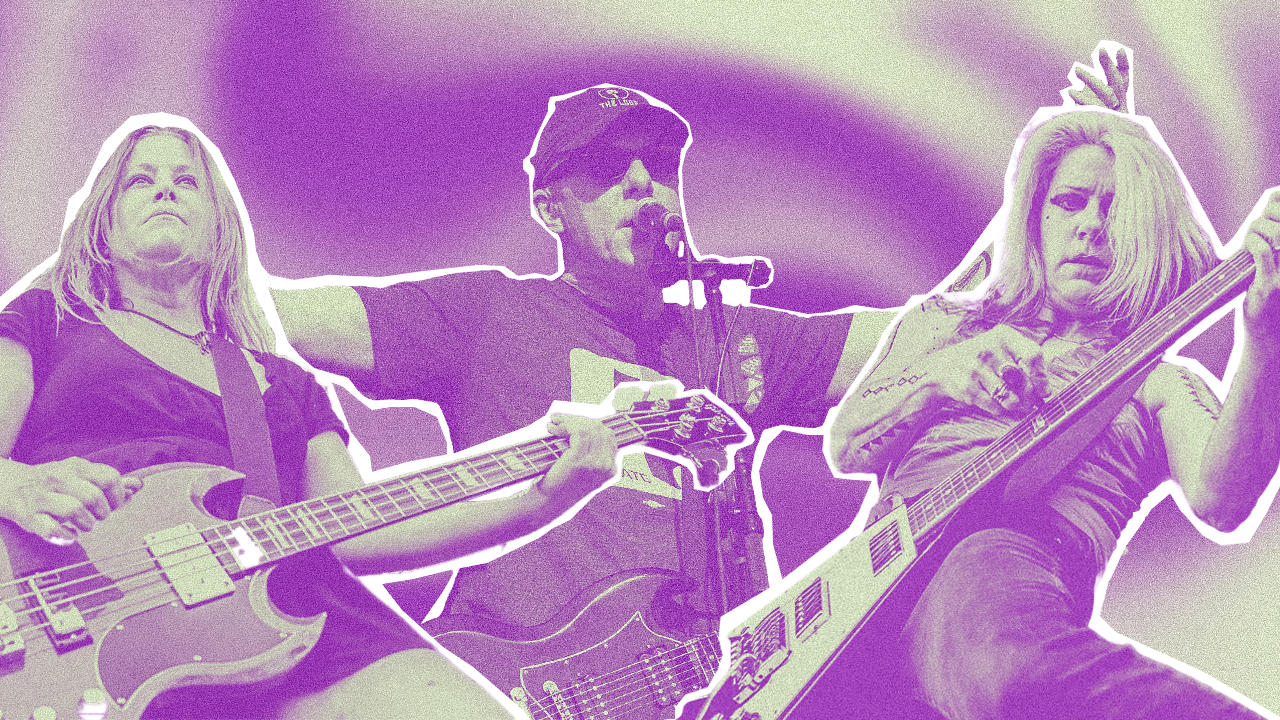With the benefit of a long-distance lens, it’s easy to assume that every band associated with grunge became big. Move to Seattle, grow your hair, dress like a lumberjack, get a guitar, easy! But for every Pearl Jam, Mudhoney, Nirvana, Alice In Chains or Soundgarden, there are a heap of groups who faded into obscurity after promising starts. Even signing to the genre’s core label Sub Pop wasn’t a sure sign of success. But there is some gold to be found in these lost treasures...

Tad
It wouldn’t be unfair to paint Tad as the band who got left behind. One of the first signings to Sub Pop, the group led by larger-than-life frontman Tad Doyle nailed the sound of grunge with their mix of punky surges, big riffs and indelible hooks and you could argue that they were the bigger draw when they embarked on a co-headline European tour with Nirvana in 1989. But line-up shifts and an inability to follow up on a promising debut album meant that a band who were so crucial to the genre’s breakthrough became a footnote in its success. That debut – 1989’s God’s Balls – still stands up today, as close as they got to capturing their frenzied performances on tape.
Love Battery
There was a more psychedelic bent to Love Battery’s sound than their peers, the four-piece balancing out the chug of guitars with dreamy, 60s-pop melodies. They also had a member nicknamed Bonehead five years before Oasis did. There are moments on the Seattle quartet’s 1992 debut Dayglo that reminds you of the sonic explorations that Pearl Jam would undertake later in their career – rock music that doesn’t revolve around delivering anthemic choruses. The difference, of course, is that Eddie Vedder & co. did that after having a bunch of huge hits, perhaps explaining why Love Battery never matched their critical acclaim with commercial success.
The Gits
Forming in Ohio in the mid-80s and moving to Seattle just as grunge was taking over the city, The Gits captured everything that was great about those prototype bands of the genre: righteous fury, fuzzy punk riffs mixed with a classic melodicism. Captivating frontwoman Mia Zapata should have been one of the scene’s stars, but she was tragically raped and murdered on the way home from a show in 1993 and the group dissolved shortly afterwards. Completed in the wake of Zapata’s death, 1994’s Enter: The Conquering Chicken is a storming showcase of an artist who was just reaching her creative peak.
The Fluid
There were some bands who emerged as part of the grunge scene who weren’t after mammoth success – not everyone wanted to be on the cover of Rolling Stone, some just wanted cult hero fandom. You could say that Denver’s The Fluid, the first non-Seattle band to sign to Sub Pop, were among the latter. Their garage-rock stomps were built for sweatbox venues, nothing over-thought or smoothed out for radio play. Because of that, their sound hasn’t aged as badly as some of the more over-produced records of the era.
Skin Yard
Formed in 1985 in Seattle, this quartet’s first line-up contained future Pearl Jam and Soundgarden drummer Matt Cameron. That began a Pearl Jam-ish revolving door of drummers with fine CVs: Cameron was replaced by Tad’s Steve Wied, who was replaced by Mother Love Bone’s Greg Gilmore, whilst Screaming Trees’ Barrett Martin would also have a stint behind the kit. Despite their mix of crunching riffs, dynamic grooves and the crooner-y, Layne Staley-style vocals of singer Ben McMillan, Skin Yard’s legacy is more about their associations than their own music – their guitarist Jack Endino produced some of the genre’s key records, including Soundgarden’s Screaming Life EP and Nirvana’s Bleach.
L7
Did time forget L7? Probably not, and their triumphant reunion tour in 2015 ensured that if anyone had momentarily let the LA rockers slip from their mind, they got sudden slap-round-the-head recollection. But they are worthy of inclusion here just for how important they were in setting a blueprint for other groups to work from. Suzi Gardner, Donita Sparks, Dee Plakas and Jennifer Finch made some brilliantly raging records and played some of the most incendiary live shows of the era but just as importantly as the music is how they led the way for activism with their Rock 4 Choice series of shows. Giving musicians a platform to show their support for abortion rights, the concerts featured performances from Nirvana, Hole, Pearl Jam, Radiohead, Stone Temple Pilots, Liz Phair and many more, whilst also influencing a new wave of bands who would be grouped together as Riot Grrrl. Now that’s a legacy.
Malfunkshun
It would be easy to fill this list with all the bands that led to Pearl Jam, so I’ll keep it limited to one pick. Malfunkshun edge it just ahead of Green River just because they sound like they’re having fun, not an accusation you can level at many grunge bands of the era. Andrew Wood, who would go on to form Mother Love Bone with Stone Gossard and Jeff Ament, managed to do his emotional blood-letting at the same time as having the time of his life, indulging his inner Freddie Mercury, his dramatic, operatic-ish delivery the perfect counterpart to the hard-rock frazzle. The band’s only record, 1995’s Return To Olympus, was released five years after Wood’s death and was compiled by his former bandmate Gossard.
Toadies
Of course Texan grunge was going to have a lightness of touch missing from all those tormented groups from the American North-West. Whilst the members of Mudhoney and Screaming Trees and the rest of them were staring out from their bedrooms going “not more rain?!”, Toadies were probably sticking on the Factor 50, trying on cowboy boots and putting a pork butt on the firepit. Accordingly, their big hit Possum Kingdom was a thoroughly enjoyable and silly singalong, repackaging grunge as rattling rock-pop.
The Frogs
It’s debatable as to not just whether The Frogs count as a grunge band but as a band at all – I’m getting all my caveats in early here, OK? – but the often-controversial comedy-music group formed by Milwaukee brothers Jimmy and Dennis Flemion were one of the only artists of the time connecting grunge’s bickering factions. They supported Pearl Jam and Mudhoney and became buddies with Kurt Cobain, making a video for Nirvana that the trio would watch on rotation on their tourbus. Most memorably, they got their own little section in the Smashing Pumpkins’ touring film Vieuphoria, perhaps a way of Billy Corgan offering up a pre-emptive sorry after he was more than slightly influenced by their track Pleasure for his own band’s 1979.
Citizen Dick
Spare a thought for Citizen Dick. Despite possessing some excellent songs, such as Louder Than Larry (Steiner) and Touch Me I’m Dick, it just never happened for the quartet. Despite being more well-connected than any band from Seattle – featuring members of Pearl Jam, buddies with Soundgarden and Mudhoney – the group were held back by hapless frontman Cliff Poncier. By the time they released their debut, Smarter Than You, a local backlash was already in full swing, the time they rocked Cleveland nothing but a distant memory.

